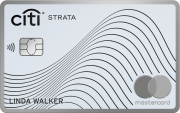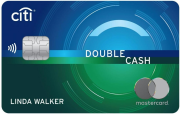The content on this page is accurate as of the posting date; however, some of the offers mentioned may have expired.

A credit report is a record of a person’s or a company’s credit history. It contains information about when, how much and how frequently they borrowed, as well as how well they repaid their loans. Obviously, the information contained in your credit report determines your credit score and therefore your ability to qualify for low rate loans, cheap mortgages and premier credit cards. That is why it is critically important to keep your credit report in good standing and to check it regularly for false, misleading or incomplete information.
A fast and easy way to get your credit report is to contact one or all of the three major credit bureaus that collect your payment information and calculate your FICO score. You can get this report from them free of charge once per year. If you want the additional convenience of reading your personal credit report online, then you should visit MyFICO, a special website that provides numerous services, such as credit calculators, and products, such as FICO Standard, as well as plenty of useful educational information on credit-related issues.
Once you get access to your credit report, you should make sure that you can read it properly. This article will focus on the credit account history, which is an important section of your report. The account history section contains information about each of your past and present credit accounts and details about how you’ve made payments on them.
Each account in the account history section is composed of the following pieces of information:
• The name of the bank or credit card company that has reported your payment behavior for the account in question.
• The Account Number.
• The Account Type, i.e. whether it is an auto loan, education loan or revolving credit account. Ideally, your account history section should contain several different types of accounts, because it shows how well you can manage your finances.
• Responsibility. This indicates whether the account is an individual account, a joint account or an authorized user type of account.
• The Minimum monthly payment is the minimum amount that you should pay each month to keep your account current. If you pay less than the minimum, or if you pay later than the payment due date, your account is then considered delinquent and you are charged penalty fees.
• The date the account was opened.
• Date Reported is the last date that the creditor sent payment information to the credit bureau.
• Current Balance is the amount that you own at the moment.
• Credit Limit is the maximum amount that you can draw down on this credit account.
• High Balance is the highest amount that you have ever spent with your credit card. High balance determines the limit on a no limit credit card.
• Past Due. This point shows any amount that was due at the moment of reporting the information.
• Payment Status shows whether your account is current, past due or a charge-off.
Note: your account history section may also contain information about collection accounts.
These key details make up the account history section of your credit report. Remember, your account history is just as important for potential lenders as your personal information, credit inquiries and public records. By summarizing all of this information, a creditor makes its final lending decision. So, if you want to be eligible for low rate loans, cheap mortgages or premium credit cards with rewards, it is important to make sure that each section of your credit report is accurate and in good standing.







